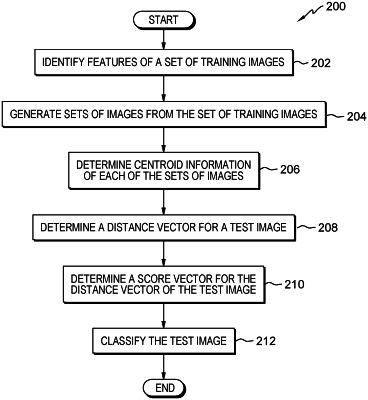| CPC G06F 18/24137 (2023.01) [G06F 18/213 (2023.01); G06F 18/214 (2023.01); G06F 18/22 (2023.01); G06F 18/23213 (2023.01); G06N 20/00 (2019.01); G06T 7/00 (2013.01)] | 11 Claims |

|
1. A method comprising:
generating, by one or more processors, one or more clusters of images from a set of training images using a clustering algorithm based at least in part on one or more sets of features of the set of training images to determine a respective centroid of each of the one or more clusters;
determining, by one or more processors, one or more distance vectors for a test image based at least in part on a set of features of the test image and the respective centroids of the one or more clusters;
generating, by one or more processors, a reduced distance vector for each distance vector of the one or more distance vectors for the test image, wherein generating the reduced distance vector further comprises:
sorting, by one or more processors, respective sets of features of the test image in ascending order utilizing a value identified for each distance vector corresponding to the respective sets of features; and
selecting, by one or more processors, a set of features of the test image above a defined threshold value from the ascending order to generate a reduced representation of the set of features of the test image;
generating, by one or more processors, a score vector based on the one or more distance vectors of the test image; and
assigning, by one or more processors, an anomaly classification to the test image based on the score vector.
|